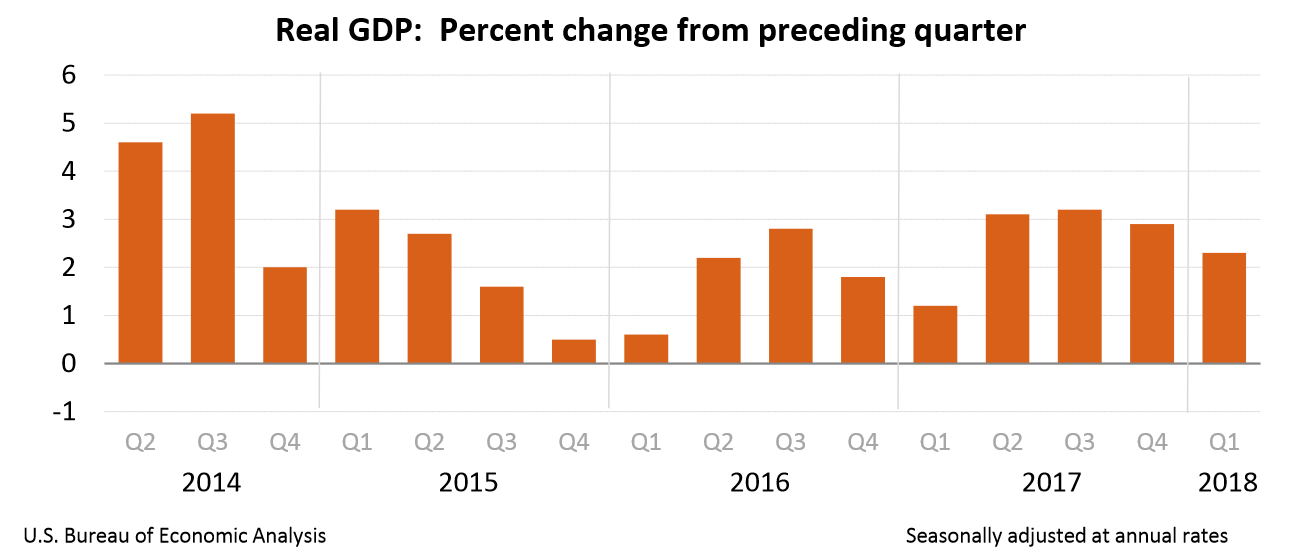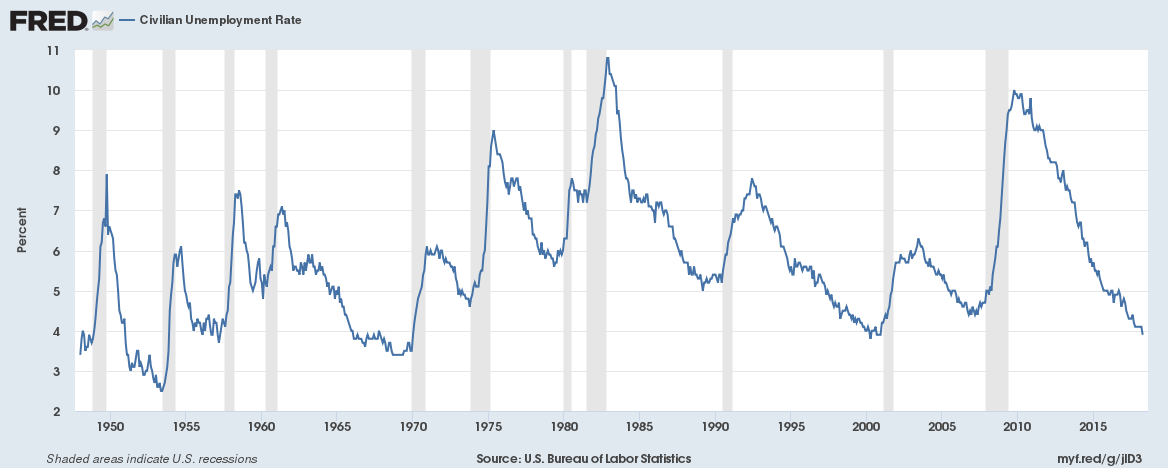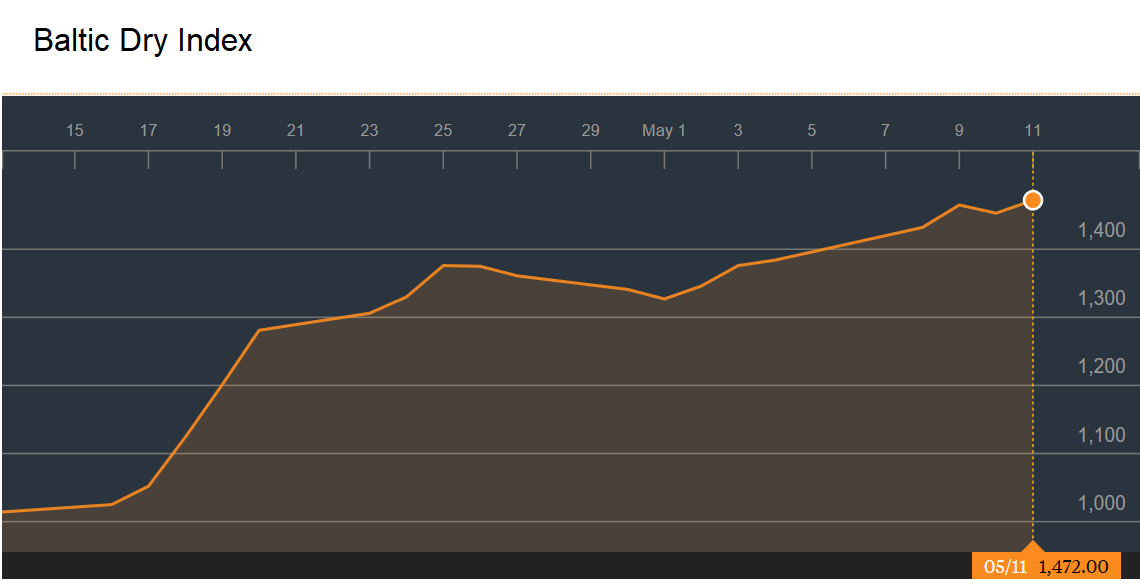The U.S. unemployment rate is at an 18-year low,
Healthcare could soon be the largest expenditure of households in the U.S.
Healthcare could be the largest personal consumption expenditure of households in the U.S. within months exceeding spend on Housing and utilities.
Households in the U.S. are likely to spend some $2.45 trillion this year on healthcare. The spending on healthcare is quickly catching up with the largest expenditure item – Housing and utilities. Here are charts,
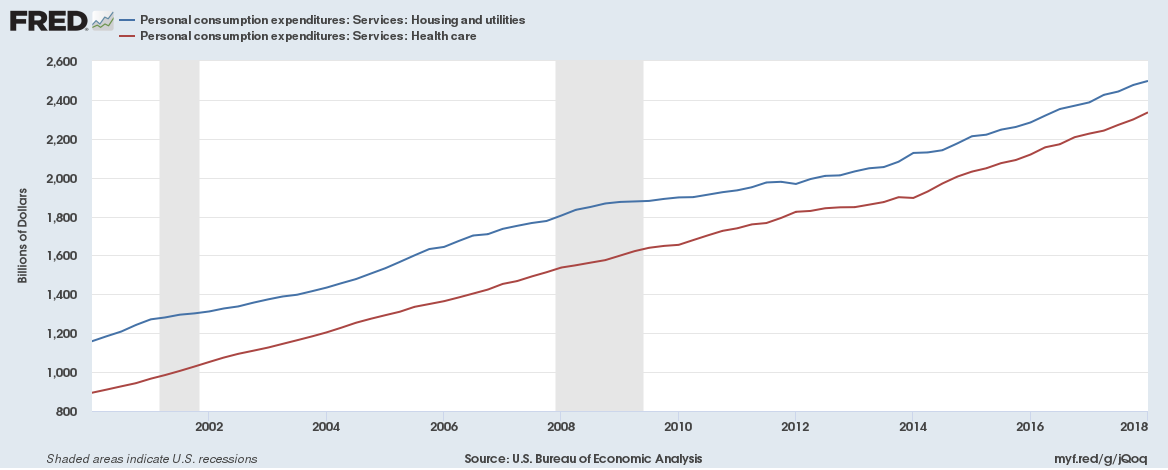 Continue reading “Healthcare could soon be the largest expenditure of households in the U.S.”
Continue reading “Healthcare could soon be the largest expenditure of households in the U.S.”
Weekly Overview: The Baltic Dry Index is up 48% over the past month; Argentina seeks IMF bailout; UK House Prices; Brazil 10-year bond tops 10%; Coal prices soaring
Baltic Dry Index
The Baltic Dry Index is a trade indicator that measures shipping prices of major raw materials and is often seen as a global growth indicator.
Over the past month, it has zoomed 48%. It is up 45% over the past year and is up 8% since the start of the year. This despite weaker US, UK and France Q1 2018 GDP growth. The Baltic Dry index generally falls in the first quarter on back of lower trading activity due to the Chinese New Year but this time it hadn’t recovered until very recently.
Here is a chart of the index over the past month,
The curious case of low U.S. money velocity
From the Federal Reserve’s definition of Money Velocity and Money Supply,
Money Velocity
The velocity of money is the frequency at which one unit of currency is used to purchase domestically- produced goods and services within a given time period. In other words, it is the number of times one dollar is spent to buy goods and services per unit of time. If the velocity of money is increasing, then more transactions are occurring between individuals in an economy. Continue reading “The curious case of low U.S. money velocity”
Weekly Overview: UK interest rate hike expectations; Argentina hikes interest rate to 40%; LIBOR OIS; US Money Supply growth accelerating again; Bank of Canada and Bank of England speeches
UK interest rate hike expectations
The Monetary Policy Committee of the Bank of England meets on Thursday, May 10 to decide the direction of interest rates.
Following a weak UK Q1 2018 GDP growth of only 0.1%, the slowest since Q4 2012 (read here) and inflation falling from 2.7% in February to 2.5% in March (against a Bank of England target of 2%), the market is now pricing in a 17% of a rate rise in May. The market had factored in a 100% chance of a hike just a few weeks ago.
UK 10-year bond yields fell 5bps during the week. The 10-year bond now yields 1.4% (up 0.32% over the past year)
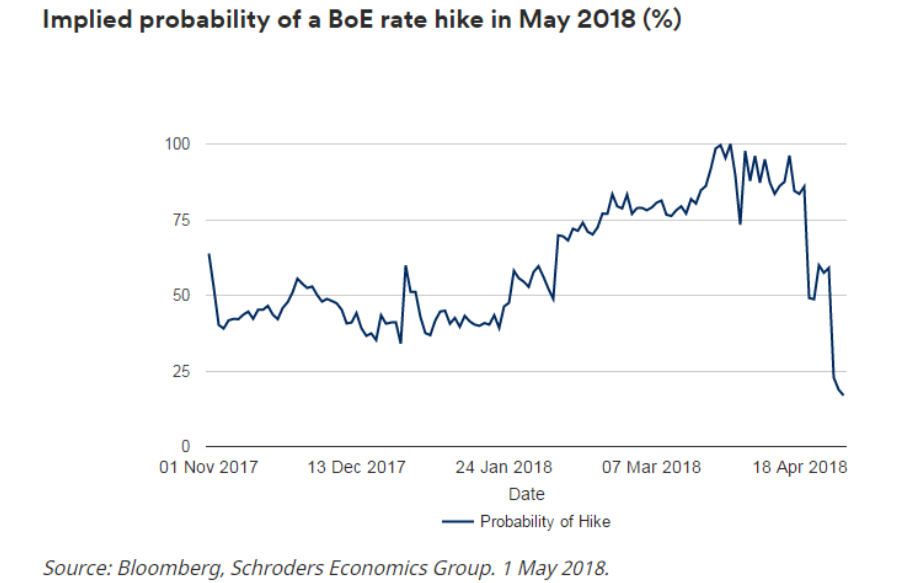
Here’s how much the total residential mortgage debt outstanding has grown since 2008 for Australia, Canada, the UK and the US
Where is the biggest property bubble?
Here’s how much the total residential mortgage debt outstanding has grown since 2008 for Australia, Canada, the UK and the US,
Household saving rates are falling globally
We recently wrote about the UK household savings ratio falling to a record low of 4.9% in 2017 (since comparable records began in 1963) as growth in households’ spending exceeded the growth of households’ income. (Read more here).
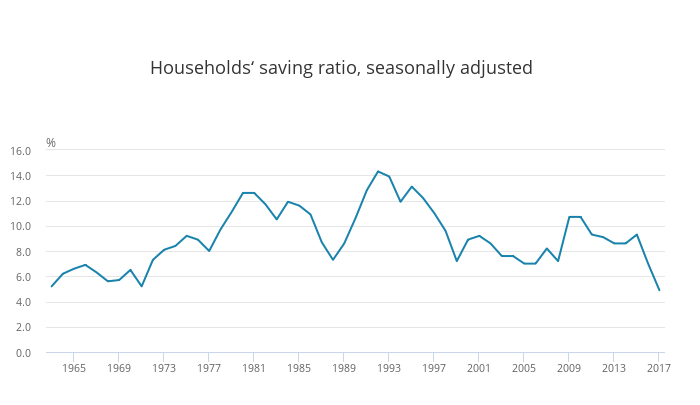
We also wrote about the household savings rate in the US falling to a multi-year low of 3.1% as household expenditure grew quicker than income (Read more here). Continue reading “Household saving rates are falling globally”
Weekly Overview: Q1 2018 GDP numbers; ECB on QE; US bond yields soar; Other things
Q1 2018 GDP
The US, the UK, France and Spain all reported GDP numbers over the last week.
US real GDP increased at an annual rate of 2.3% in the first quarter of 2018 as per an advance estimate released by the Bureau of Economic Analysis. Read more about it here.
Personal consumption collapsed, with vehicle sale falling significantly. Business inventories were up significantly too. Total employee compensation (which includes wages and benefits) rose 2.7% over past 12 months, up from 2.4% a year ago and the highest since Q3 2008, while the household savings rate fell to a multi-year low of 3.1%.
UK Q1 2018 GDP only increased by 0.1%, growth slowest since Q4 2012
UK GDP was estimated to have increased by 0.1% in Q1 2018 as per the Office for National Statistics. We reported here at the end of March that UK households’ saving ratio fell to the lowest ever on record as mortgage and consumer credit outstanding hit the highest ever.
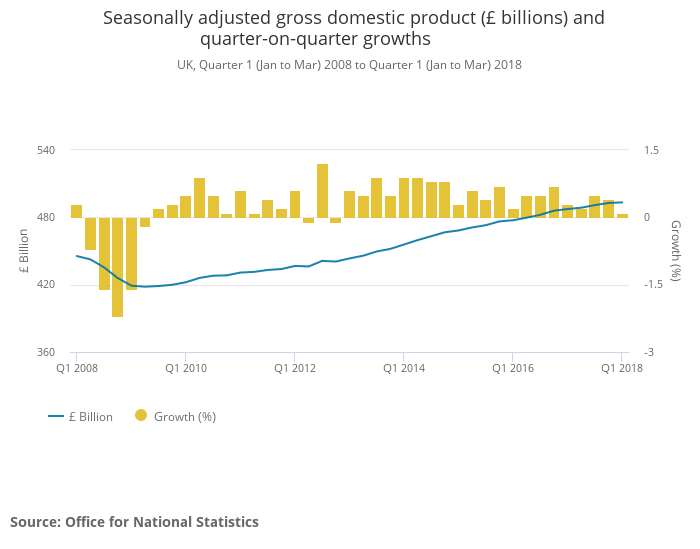
Continue reading “UK Q1 2018 GDP only increased by 0.1%, growth slowest since Q4 2012”
US Q1 2018 GDP estimated at 2.3% as personal consumption collapses; wage growth highest in a decade; personal saving rate falls
US real GDP increased at an annual rate of 2.3% in the first quarter of 2018 as per an advance estimate released by the Bureau of Economic Analysis.
